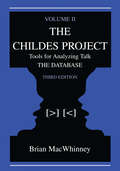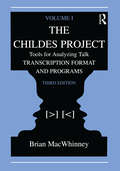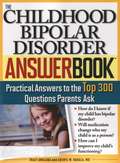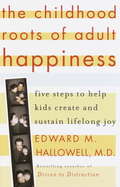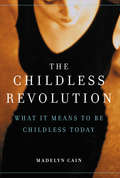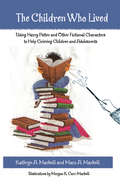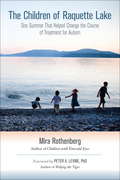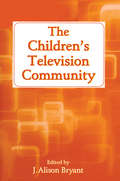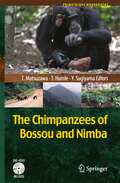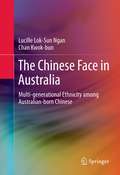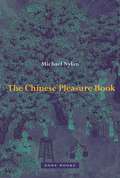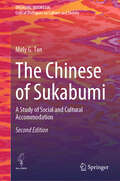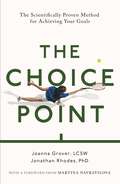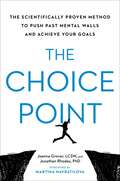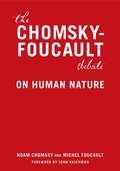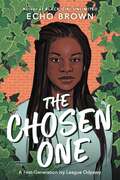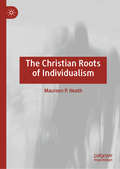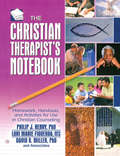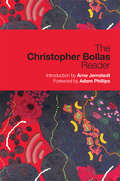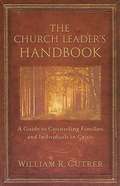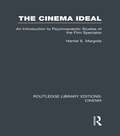- Table View
- List View
The Childes Project: Tools for Analyzing Talk, Volume II: the Database
by Brian MacWhinneyVolume I is the first of two volumes that document the three components of the CHILDES Project. It is divided into two parts which provide an introduction to the use of computational tools for studying language learning. The first part is the CHAT manual, which describes the conventions and principles of CHAT transcription and recommends specific methods for data collection and digitization. The second part is the CLAN manual, which describes the uses of the editor, sonic CHAT, and the various analytic commands. The book will be useful for both novice and experienced users of the CHILDES tools, as well as instructors and students working with transcripts of child language. Volume II describes in detail all of the corpora included in the CHILDES database. The conversational interactions in the corpora come from monolingual children and their caregivers and siblings, as well as bilingual children, older school-aged children, adult second-language learners, children with various types of language disabilities, and aphasic recovering from language loss. The database includes transcripts in 26 different languages.
The Childes Project: Tools for Analyzing Talk, Volume I: Transcription format and Programs
by Brian MacWhinneyVolume I is the first of two volumes that document the three components of the CHILDES Project. It is divided into two parts which provide an introduction to the use of computational tools for studying language learning. The first part is the CHAT manual, which describes the conventions and principles of CHAT transcription and recommends specific methods for data collection and digitization. The second part is the CLAN manual, which describes the uses of the editor, sonic CHAT, and the various analytic commands. The book will be useful for both novice and experienced users of the CHILDES tools, as well as instructors and students working with transcripts of child language. Volume II describes in detail all of the corpora included in the CHILDES database. The conversational interactions in the corpora come from monolingual children and their caregivers and siblings, as well as bilingual children, older school-aged children, adult second-language learners, children with various types of language disabilities, and aphasic recovering from language loss. The database includes transcripts in 26 different languages. The CD-ROM that accompanies these volumes includes the transcript files described in Volume II. It runs on both Windows and Macintosh platforms. For more information or updates to the files, visit the CHILDES Web site at http://childes.psy.cmu.edu
The Childhood Bipolar Disorder Answer Book: Practical Answers to the Top 300 Questions Parents Ask
by Tracy Anglada Sheryl HakalaHow does bipolar disorder affect learning? Is there a cure? Is this a fad diagnosis? How do I handle manipulation? How can I prevent relapses? Should I use alternative treatments? How can I parent effectively? "We are certain that all parents whose children struggle with bipolar disorder will find this book indispensable." - Demitri F. Papolos, MD, and Janice Papolos, authors of The Bipolar Child. Co-written by a doctor and a mother whose children live with bipolar disorder, The Childhood Bipolar Disorder Answer Book explains confusing medical lingo and provides straightforward answers to all your pressing questions about treatment, parenting strategies, and everything else. How is childhood bipolar disorder different from an adult onset? What are the earliest symptoms? Why is my child so irritable? How young can these symptoms manifest? Should all family members be evaluated for bipolar disorder? Will my child lead a normal life? Written in an easy-to-read Q&A format, The Childhood Bipolar Disorder Answer Book helps you understand and accept your child and develop a plan for success.
The Childhood Conclusions Fix: Turning Negative Self-Talk Around
by Lisette SchuitemakerReading this book, you get the sense that Lisette Schuitemaker sees right through you. As if she knows that you gorge on chocolate at times, that you go crazy if people know something you don’t, that you are bound to hit the slow cashier one day. Or that in truth you’re not here at all with your thoughts. And how ardently you hope that one day someone will truly love you the way you are. You, me, all of us have drawn some conclusions in our childhood: impressions we got as a young child and the conclusions we jumped to about ourselves, the world and our place in it. These childhood conclusions still produce habitual thoughts that mark our behaviors. “Why didn’t I know this before and why don’t we all know this?’ were the questions that prompted the author to share her insights. Illustrated with examples from her private practice she shows how childhood conclusions are at work in all of us – and how we can turn them around into a positive outlook on ourselves and others. The five childhood conclusions tell you exactly what you think about yourself. And how you could think differently. And gain so much more freedom for living your life. This book is for anyone who is curious where their habitual thoughts arise from.
The Childhood Of Art (European Perspectives: A Series In Social Thought And Cultural Criticism)
by Sarah KofmanThe Childhood of Art: An Interpretation of Freud's Aesthetic
The Childhood Roots of Adult Happiness
by Edward M. HallowellIt's never been easy to raise children, and arguably it's even more difficult now. In this measured and humane book Dr Edward Hallowell offers a sensible strategy for raising happy children. In his plan he has two primary goals for children:1) that they develop a sense of 'connection' with those around them and2) the development of a sense of mastery over one or more areas of their lives. When parents guide their children towards these goals, the outcome will be good. Other key issues he raises are: -...
The Childless Revolution
by Madelyn CainThanks in part to birth control, delayed marriages, and the emergence of two-career couples, 42% of the adult female population is childless, representing the fastest-growing demographic group to emerge in decades. Alternately pitied and scorned, childless women are rarely asked directly about the reasons for their status; the elephant in the living room, childlessness is a taboo subject.Asking the hard questions, Madelyn Cain uncovers the many reasons for childlessness--from infertility to a focus on a career to even political action--and explores the ramifications, both personal and sociological. Simultaneously compassionate and journalistically curious, The Childless Revolution is informed by the stories of over 100 childless women, at long last giving voice to their experience and validating the jumble of emotions women feel about being a part of such a controversial population. For childless women and their families everywhere, this is the first--and long overdue--book to put a face on women who have made a largely misunderstood reproductive choice.
The Children Who Lived: Using Harry Potter and Other Fictional Characters to Help Grieving Children and Adolescents
by Kathryn A. Markell Marc A. MarkellHarry Potter’s encounters with grief, as well as the grief experiences of other fictional characters, can be used by educators, counselors, and parents to help children and adolescents deal with their own loss issues. The Children Who Lived is a unique approach toward grief and loss in children. Focusing on fictional child and adolescent characters experiencing grief, this book uses classic tales and the Harry Potter books to help grieving children and adolescents. Included in the text and the companion CD are a number of activities, discussion questions, and games that could be used with grieving children and adolescents, based on the fictional characters in these books.
The Children of Raquette Lake
by Mira Rothenberg Peter A. LevineThe Children of Raquette Lake: One Summer That Helped Change the Course of Treatment for Autism is an inspiring account of author Mira Rothenberg's experience with eleven autistic and schizophrenic children during the summer of 1958. In order to avoid the regression that often occurred during the summer months, Rothenberg, a trained psychologist, and her colleagues Zev Spanier and Tev Goldsman, decided to bring their young patients to a camp in Raquette Lake, located in the Adirondack region of Northern New York.As Rothenberg explains, this was a time when severely disturbed children were considered untreatable and often sent to live out their lives in institutions where their needs were neglected and ignored. Many of Rothenberg's patients exhibited signs of abuse and emotional trauma. On the island, Rothenberg, Spanier, and Goldsman discovered that by applying what was then an unconventional treatment of loving care and tolerance, their young patients improved and were able to heal many of the emotional and physical issues associated with their conditions. Written like a narrative journal that follows the children's progress from week to week, The Children of Raquette Lake is interwoven with personal histories and fascinating case stories that demonstrate the healing power of the human heart. The book also provides a valuable list of resources for therapists and parents of autistic children.From the Trade Paperback edition.
The Children's Television Community (Routledge Communication Series)
by J. Alison BryantThe Children’s Television Community presents a cutting-edge analysis of the children’s television community—the organizations, major players, and approaches to programming—and gives an overview of the history, current state, and future of children’s programming. Leading children’s television professionals and distinguished academicians come together in this volume to take a distinctive behind-the-scenes look at how children’s television is created, programmed, and sold. This thought-provoking work emphasizes the various actors whose creative, financial, political, and critical input go into children’s television, and addresses advocacy for children’s television from multiple approaches. By blending these diverse perspectives, editor J. Alison Bryant offers readers a comprehensive picture of children’s television. Highlights include:* a community level approach to understanding children’s television;* perspectives from colleagues in various aspects of the media industry; and* an eye-opening analysis of how decision-making affects what children are exposed to through television. The Children’s Television Community is highly informative for educators, industry professionals, and practitioners in media, developmental psychology, and education.
The Chimpanzees of Bossou and Nimba
by Tatyana Humle Tetsuro Matsuzawa Yukimaru SugiyamaThe chimpanzees of Bossou in Guinea, West Africa, form a unique community which displays an exceptional array of tool use behaviors and behavioral adaptations to coexistence with humans. This community of Pan troglodytes verus has contributed more than three decades of data to the field of cultural primatology, especially chimpanzees' flexible use of stones to crack open nuts and of perishable tools during foraging activities. The book highlights the special contribution of the long-term research at Bossou and more recent studies in surrounding areas, particularly in the Nimba Mountains and the forest of Diécké, to our understanding of wild chimpanzees' tool use, cognitive development, lithic technology and culture. This compilation of research principally strives to uncover the complexity of the mind and behavioral flexibility of our closest living relatives. This work also reveals the necessity for ongoing efforts to conserve chimpanzees in the region. Chimpanzees have shed more light on our evolutionary origins than any other extant species in the world, yet their numbers in the wild are rapidly declining. In that sense, the Bossou chimpanzees and their neighbors clearly embody an invaluable cultural heritage for humanity as a whole.
The Chinese Face in Australia
by Chan Kwok-Bun Lucille Lok-Sun NganThe book explains how multi-generational Australian-born Chinese (ABC) negotiate the balance of two cultures. It explores both the philosophical and theoretical levels, focusing on deconstructing and re-evaluating the concept of 'Chineseness.' At a social and experiential level, it concentrates on how successive generations of early migrants experience, negotiate and express their Chinese identity. The diasporic literature has taken up the idea of hybrid identity construction largely in relation to first- and second-generation migrants and to the sojourner's sense of roots in a diasporic setting somewhat lost in the debate over Chinese diasporas and identities are the experiences of long-term migrant communities. Their experiences are usually discussed in terms of the melting-pot concepts of assimilation and integration that assume ethnic identification decreases and eventually disappears over successive generations. Based on ethnography, fieldwork and participant observation on multi-generational Australian-born Chinese whose families have resided in Australia from three to six generations, this study reveals a contrasting picture of ethnic identification.
The Chinese Pleasure Book
by Michael NylanThis book takes up one of the most important themes in Chinese thought: the relation of pleasurable activities to bodily health and to the health of the body politic. Unlike Western theories of pleasure, early Chinese writings contrast pleasure not with pain but with insecurity, assuming that it is right and proper to seek and take pleasure, as well as experience short-term delight. Equally important is the belief that certain long-term relational pleasures are more easily sustained, as well as potentially more satisfying and less damaging. The pleasures that become deeper and more ingrained as the person invests time and effort to their cultivation include friendship and music, sharing with others, developing integrity and greater clarity, reading and classical learning, and going home. Each of these activities is explored through the early sources (mainly fourth century BC to the eleventh century AD), with new translations of both well-known and seldom-cited texts.
The Chinese of Sukabumi: A Study of Social and Cultural Accommodation (Engaging Indonesia)
by Mely G. TanThis book explores the historical and contemporary experiences of the Chinese in Sukabumi, Indonesia, including their migration to the region, their economic activities, and their relationships with the local population. The book also examines the cultural practices of the Chinese in Sukabumi, including their religion, language, and traditions, and how they have adapted to the local culture. Through extensive research and analysis, the author provides a detailed account of the ways in which the Chinese of Sukabumi have navigated their place in Indonesian society, and the challenges they have faced in doing so. Presented as a co-published edition with Yayasan Pustaka Obor Indonesia, and released in memoriam to the late Mely G. Tan, this edition of The Chinese of Sukabumi honours this original comprehensive study of the social and cultural adaptation of the Chinese community in Sukabumi with the aim of bringing it to a wider international audience. It is an essential resource for scholars and students of Southeast Asian studies, as well as anyone interested in the cultural and social dynamics of the Chinese diaspora.
The Choice Point: The Scientifically Proven Method for Achieving Your Goals
by Jonathan Rhodes Joanna GroverThe scientifically proven method to overcome obstacles and make choices that lead us closer to our goalsWITH A FOREWORD BY MARTINA NAVRATILOVAWhen we choose to go to the gym at 6 a.m., keep running that marathon or stay up late to study, we are making conscious, value-based decisions that help us fulfil our goals. But even though we know that daily good choices add up to healthy habits and strong results, these days it's just too easy to surrender to negative thoughts and old habits. How can we not?Enter Functional Imagery Training (FIT). Grounded in science, FIT helps us lengthen our Choice Point: that moment when we say to ourselves, 'Am I going to make the healthy decision, or am I going to choose to take an action that I know will undermine my success?' Merging mindfulness, motivational interviewing and cognitive behavioural therapy into a user-friendly model, The Choice Point grants us control of the decisions that define us.
The Choice Point: The Scientifically Proven Method to Push Past Mental Walls and Achieve Your Goals
by Jonathan Rhodes Joanna GroverDiscover a scientifically proven method to overcome obstacles and make choices that lead us closer to our goals—featuring a foreword by Martina Navratilova. When we choose to go to the gym at 6am, keep running that marathon, or stay up late to study, we are making conscious, value-based decisions that help us fulfill our goals. But even though we know that daily good choices add up to healthy routines and strong results, these days it&’s just too easy to surrender to negative thoughts and old habits. How can we not? Enter Functional Imagery Training (FIT). Grounded in science, FIT helps us lengthen our Choice Point: that moment when we say to ourselves, &“Am I going to make the healthy decision, or am I going to choose to take an action that I know will undermine my success?&” Merging mindfulness, motivational interviewing, and cognitive behavioral therapy into a user-friendly model—the first non-academic book of its kind—The Choice Point grants us control of the decisions that define us. Jonathan Rhodes, a British psychologist, helped develop FIT, and Joanna Grover, an experienced therapist and coach, was the first person in the U.S. to be certified in FIT. Together, they work where science meets imagination to achieve peak performance, and their tools help us get to the root of our motivation. They&’ve trained Olympians, C-Suite executives, and elite forces in the military to hack their autopilot systems and break records in their respective fields. The Choice Point is the roadmap they&’ve built along the way, leading us from passengers to drivers of our own minds.
The Chomsky-Foucault Debate: On Human Nature
by Noam Chomsky Michel FoucaultTwo of the twentieth century's most influential thinkers debate a perennial question. In 1971, at the height of the Vietnam War and at a time of great political and social instability, two of the world's leading intellectuals, Noam Chomsky and Michel Foucault, were invited by Dutch philosopher Fons Edlers to debate an age-old question: is there such a thing as "innate" human nature independent of our experiences and external influences? The resulting dialogue is one of the most original, provocative, and spontaneous exchanges to have occurred between contemporary philosophers, and above all serves as a concise introduction to their basic theories. What begins as a philosophical argument rooted in linguistics (Chomsky) and the theory of knowledge (Foucault), soon evolves into a broader discussion encompassing a wide range of topics, from science, history, and behaviorism to creativity, freedom, and the struggle for justice in the realm of politics. In addition to the debate itself, this volume features a newly written introduction by noted Foucault scholar John Rajchman and includes additional text by Noam Chomsky.
The Chosen One: A First-Generation Ivy League Odyssey
by Echo BrownThis memoir filled with &“overwhelming emotions and power&” (The Mary Sue) testifies to the disappointments and triumphs of a Black first-generation college student in this exploration of the first-year experience.There are many watchers and they are always white. That&’s the first thing Echo notices as she settles into Dartmouth College. Despite graduating high school in Cleveland as valedictorian, Echo immediately struggles to keep up in demanding classes. Dartmouth made many promises it couldn't keep. The campus is not a rainbow-colored utopia where education lifts every voice. Nor is it a paradise of ideas, an incubator of inclusivity, or even an exciting dating scene. But it might be a portal to different dimensions of time and space—only accessible if Echo accepts her calling as a Chosen One and takes charge of her future by healing her past. This remarkable challenge demands vulnerability, humility, and the conviction to ask for help without sacrificing self-worth. In mesmerizing personal narrative and magical realism, Echo Brown confronts mental illness, grief, racism, love, friendship, ambition, self-worth, and belonging as they steer the fates of first-generation college students at Dartmouth. The Chosen One is an unforgettable coming-of-age story that bravely unpacks the double-edged college transition—as both catalyst for old wounds and a fresh start. Finalist for the Ohioana Book Award A Mary Sue Best YA Novel of the Year2022 Catalyst Award Nominee for Best Memoir A Junior Library Guild Selection ★ &“Powerful and vulnerable"—Booklist, starred review
The Christian Roots of Individualism
by Maureen P. HeathThe modern West has made the focus on individuality, individual freedom, and self-identity central to its self-definition, and these concepts have been crucially shaped by Christianity. This book surveys how the birth of the Christian worldview affected the evolution of individualism in Western culture as a cultural meme. Applying a biological metaphor and Richard Dawkins’ definition of a meme, this work argues the advent of individualism was not a sudden innovation of the Renaissance or the Enlightenment, but a long evolution with characteristic traits. This evolution can be mapped using profiles of individuals in different historical eras who contributed to the modern notion of individualism. Utilizing excerpts from original works from Augustine to Nietzsche, a compelling narrative arises from the slow but steady evolution of the modern self. The central argument is that Christianity, with its characteristic inwardness, was fundamental in the development of a sense of self as it affirmed the importance of the everyday man and everyday life.
The Christian Therapist's Notebook: Homework, Handouts, and Activities for Use in Christian Counseling
by David R. Miller Philip J. Henry Lori Marie FigueroaProvide professionally sound and principled therapy based on the truth of GodChristians are faced with the same range of problems as everyone else. However, Christian therapists understand deeply the unique issues involved with their therapy. The Christian Therapist&’s Notebook is a single source for innovative, user-friendly techniques for connecting the everyday world of the client with Christian principles and Scripture. This creative, timesaving guide assists therapists in helping clients achieve therapy goals through professionally sound and principled exercises while always maintaining a positive, supportive connection with Christian beliefs. Helpful features include Scripture references relevant to common problems, case studies, vignettes, professional resource lists, client resource lists, in-session exercises, homework exercises, and handouts.The Christian Therapist&’s Notebook bases its success on three foundations: the truth of scripture; the centrality of Christ; and the guidance of the Holy Spirit. The book&’s three sections include individuals, couples and families, and children and adolescents. Each chapter focuses on a single exercise to address an important issue that may be affecting the client. Chapters provide a guiding Scripture quote, an objective, rationale for use, clear and specific instructions, suggestions for a follow-up, a vignette illustrating the exercise&’s success, contraindications, extensive resources, and related Scriptures.The Christian Therapist&’s Notebook exercises include: "A New Creation," which uses a Christogram to personalize the Biblical promises and truths of the spiritual transformation "Snapshots," which reveals repetitive behavior patterns in relationships "Core Connections," which helps the client explore the organization of relational core connections to other people as well as to God "Temptation Judo," which explores the connection between temptation and needs while uncovering God&’s promise of escape "Broken Mirrors," which identifies unresolved issues affecting self-image and moves the client to a personal relationship with God "The Book of My Life," which helps identify situations and people that have had an impact on clients, while helping them to acknowledge that God has a plan for them "Tearing Down Strongholds," which helps take the client through the process of repentance "It Was Wrong," which helps abuse victims deal with pain and frustration "Bowing Down," which helps to restore a healthy relationship "Panic Breaker," which helps get to the root of client fears "Parenting after Divorce" "Self-esteem," which helps children with self-concept and many, many more!The Christian Therapist&’s Notebook is the answer for practicing therapists, counselors, interns, pastors, educators, and students searching for activities for client therapy based upon the truth of God.
The Christopher Bollas Reader
by Christopher BollasThis reader brings together a selection of seminal papers by Christopher Bollas. Essays such as "The Fascist State of Mind," "The Structure of Evil," and "The Functions of History" have established his position as one of the most significant cultural critics of our time. Also included are examples of his psychoanalytical writings, such as "The Transformational Object" and "Psychic Genera," that deepen and renew interest in unconscious creative processes. Two recent essays, "Character and Interformality" and "The Wisdom of the Dream" extend his work on aesthetics and the role of form in everyday life. This is a collection of papers that will appeal to anyone interested in human experience and subjectivity.
The Church Leader's Handbook: A Guide to Counseling Families and Individuals in Crisis
by William Cutrern this helpful handbook, William Cutrer guides pastors, other ministry leaders, and laypeople through crisis care and ministry. Drawing from his personal and professional experience as a physician and seminary professor, Cutrer covers a wide variety of topics, from specific crises such as suicide, to more general family issues such as teen pregnancy. "It is my prayer," Cutrer writes, "that this manual and workbook will be a helpful, practical reference."
The Cinema Ideal: An Introduction to Psychoanalytic Studies of the Film Spectator (Routledge Library Editions: Cinema)
by Harriet E. MargolisThis study explores the model derived from Freudian and Lacanian psychoanalysis, via Marxism and semiotics, of looking at film. It retraces the steps of film theory from ideological criticism of the late ‘60s to spectator studies in 1988 when the book was originally published. Psychoanalysis enables a discussion of the cinema’s role as a social and political force and this book enters a discourse of the politics of representation. Reconstructing discussion of basic issues, the book addresses our instincts and defences in reacting to cinema, the similarity between mental processes and cinematic technique, narrative techniques and the ‘cinematic apparatus’. Importantly, the book concerns itself with the concept of ideology and how the filmviewing experience engages the spectator in a complex net of stimuli presenting representations of an ideal world and the effect of this within film studies.
The Cinema of the Real (SUNY series, Insinuations: Philosophy, Psychoanalysis, Literature)
by Hyon Joo YooA significant intervention into Lacanian film studies, this book sets forth a new theory of the psychoanalytic Real in cinema. In psychoanalysis, the Real ruptures the Symbolic that organizes law, ideology, and other systems of belief, revealing fissures in this underlying order. The Cinema of the Real explores how transnational cinema and especially South Korean cinema facilitate an encounter with the Real, enabling the emergence of a new political subject. Paying close attention to form, Hyon Joo Yoo reveals the existence of an "emancipatory drive" in films by Jang Hun, Park Chan-wook, Lee Chang-dong, Jia Zhangke, Michael Haneke, Claire Denis, and Bong Joon-ho, among others. Their work in effect provides viewers with a picture of how it looks and feels to be on a trajectory in which the subject and her world can change. Far from being a passive consumer of images, Yoo's spectator enters the space of the Real. Theoretically rigorous and inventive, The Cinema of the Real offers new, transnationally attuned tools for conceptualizing the body, affect, femininity, and spectatorship, as well as fresh readings of both classic and contemporary films.
The Cinematic Mirror for Psychology and Life Coaching
by Mary Banks GregersonCinema both reflects life and contours life--that is its psychological power. And for decades, clinicians and educators have recognized the value of this power, using it to respectively heal in therapy and educate in the classroom. The Cinematic Mirror for Psychology and Life Coaching mines the illustrative value of cinema, offering therapists and life coaches access to ideas that can motivate and enlighten clients. Although many movie guides exist, this volume complements the available literature by adding positive psychology, mental health, and wellness perspectives to the clinical/educational/coaching mix. The serious intent to cull from cinema its underlying psychological value has motivated noted clinicians, life coaches, and cultural critics to offer science-based analysis and intervention strategies. Readers may add their own movie insights and professional expertise to this rich foundation. The volume covers international as well as domestic cinema in a variety of genres, providing a range of film choices relevant to clients' lives. Beyond this, it expands on universal concepts of strengths, capabilities, and coping methods. Chapters in The Cinematic Mirror: analyze how movies can create and relieve trauma, challenge Hollywood's portrayal of the American family, overview the use of movies to examine relationships in therapy, explore the acclaimed Up television cinema verite series as studies in personal growth and social change, reinterprets images of disability in terms of positive psychology, examines models, or the lack thereof, for the American adolescent rite of passage, traces the history of mental illness stereotypes in film. The collective wisdom found in The Cinematic Mirror for Psychology and Life Coaching will bring professionals involved in healing, coaching, counseling, education, and mentoring not only new applications but new appreciation for the transformative power of film. That power already exists. Readers just have to "SEE" it.
